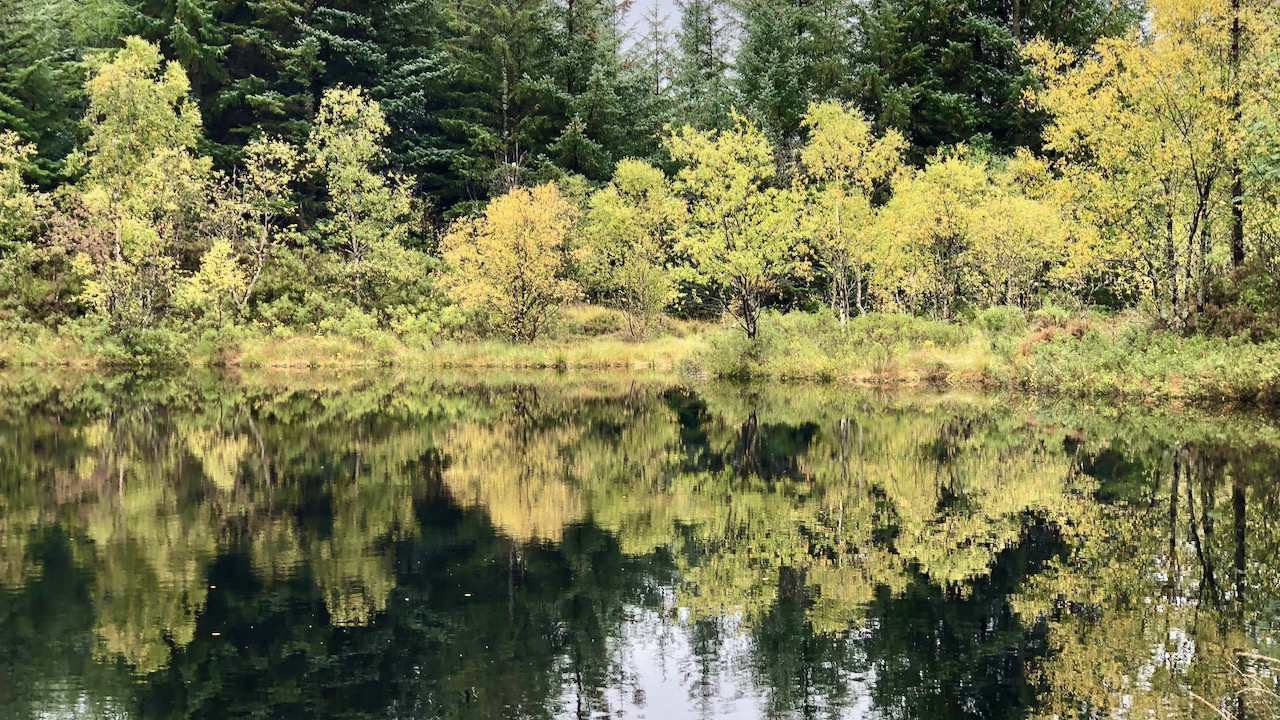Beneath the reflections of the autumnal hues rests an abandoned sword, a long-sword, the claymore that belonged to Robert the Bruce.
Near this wee loch lies Dal Righ, a place of flat, marshy meadow, where Bruce and what remained of his army were ambushed by Clan MacDougall in the summer of 1306. Bruce had already suffered defeat in the battle of Methven, near Perth, and had sought refuge at St. Fillan’s Priory.
Taken unawares, this skirmish was swift and frantic, with the last of Bruce’s horsemen falling and several key allies sustaining injuries. Dal Righ, in Gaelic, means the ‘Place of the King.’
Legend has it that after this skirmish, Robert the Bruce ordered his surviving followers to cast their weapons into this small lochan, including his own hefty two-handed claymore. Local lore insists it still rests there to this very day.
In the Wars of Independence in 1296, Clan MacDougall and Robert the Bruce had stood as allies. However, when, in 1306, Robert slew John Comyn, the clan chief’s nephew and a contender for the throne, their friendship turned into bitter enmity. The MacDougalls then joined forces with Edward I of England. Six weeks after Comyn’s murder in the Chapel of Greyfriars Monastery in Dumfries, Bruce was crowned as the King of Scots.
Following this skirmish at Dal Righ, Bruce went into hiding, and nearly every cave in Scotland boasts a tale of Bruce taking refuge within. In one such cave, he purportedly watched a spider weaving a web, striving to connect one part of the cave’s roof to another. It failed twice, but persevered and succeeded on the third attempt. Inspired by this, Bruce emerged from hiding and delivered a string of defeats to the English, gaining him more supporters and eventual victory. This story underscores the adage: “if at first you don’t succeed, try, try, try again.” Thus, two years later, he vanquished the MacDougalls at the ‘Battle of the Pass of Brander.’
As you might discern from the map, another lochan, Lochan nan Arm, rests to the south of the River Fillan. I’ve been informed that this name translates as the ‘lochan of the weapons.’ From the name alone, this does indeed seem more plausible as the actual site of a weapon dump. Yet, why would a retreating army first cross a swift-flowing river only to seek out a lochan in which to discard their arms?
Why the legend shifted, no one truly knows. In July 2015, a team from the MacDonald Armouries in Edinburgh arrived to employ metal detectors on the supposed skirmish site and the lochans. Regrettably, they unearthed no concrete evidence of a battle or discarded weapons, leaving us still without a definitive answer to the legend of the Lost Sword of Robert the Bruce.
However, for me, this constitutes merely another stitch from the expansive fabric of Scottish history.

Leave a Reply